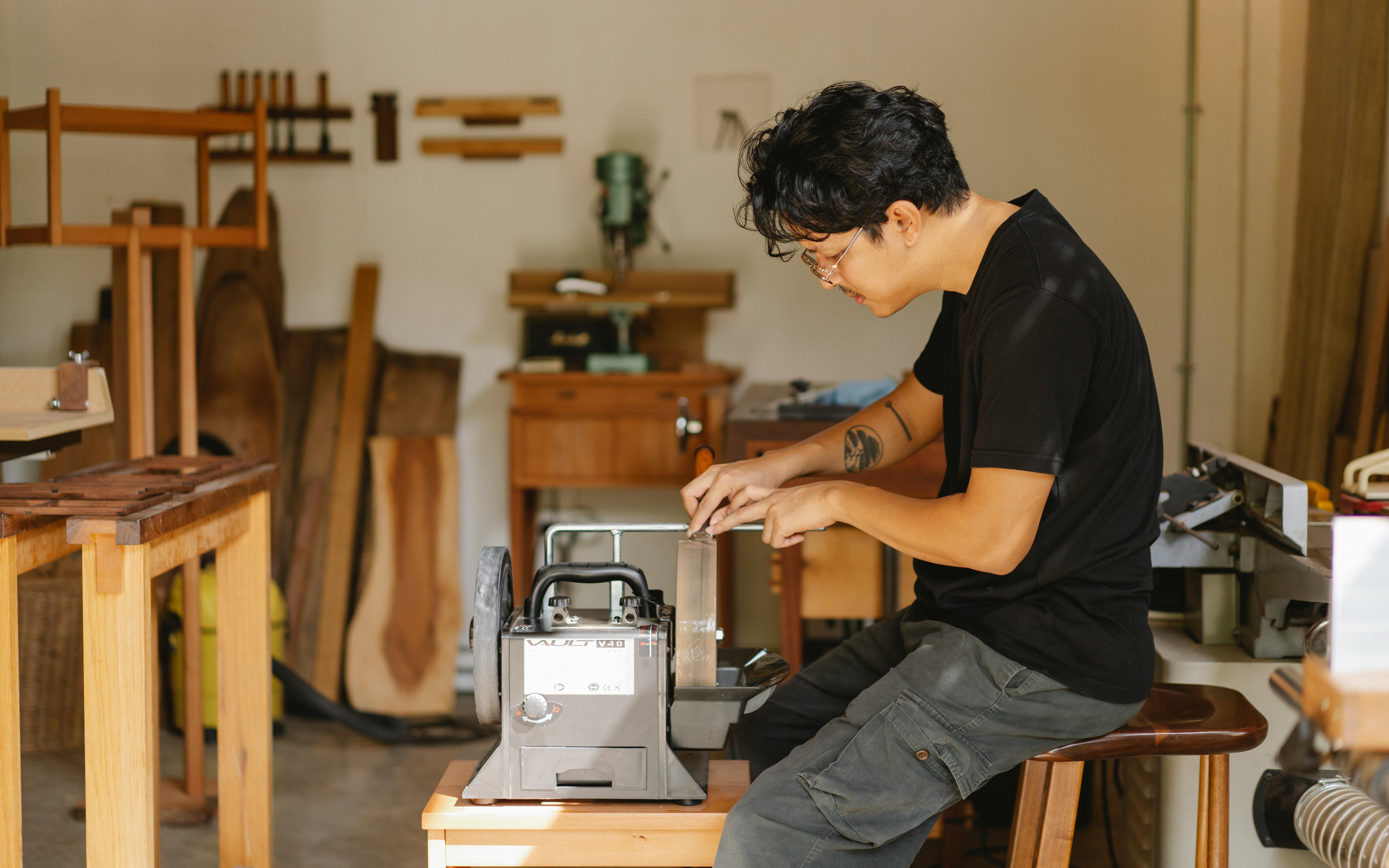How can you tell if you are getting value for your money?
Not all Adirondack chairs are created equally but it’s very difficult to tell quality when all you have to base your opinion on is a photo. So here are some of the things you should consider when purchasing an Adirondack chair.
Comfort:
When comparing Adirondack chairs here are a few things to look for:
Leaning back: Adirondack chairs were originally designed to sit on a hill (or mountain) when placed on this sloped surface the chair actually sat level… most took this chair and put it on flat surfaces without adjusting the recline of the chair – thus the standard chair leans back too far and makes it hard to get in and out of. Make sure the back has a gentle lean – not a lounge chair lean.
Flat backs vs Curved backs: Flat backs are hard on your spine when sitting but curved (fan style) backs that are too drastically curved cause you to hunch your shoulders forward in order to lean back in the chair causing stress between the shoulder blades. The curve should be slight as the natural curve between your shoulder blades.
Seat curve: If you see a dramatic curve in the seat odds are it’s not going to be as comfortable as a gentle curve. A dramatic curve creates steep edged angles of the slats screwed on top which dig in when you are sitting. Better a flat seat than one that is overly curved but the slight gentle curve is the most accommodating so long as the seat does not curve in too much. Too much of a curve can also cause pressure points behind the knees.
Seat bottom: Some chairs have a wide last seat slat custom shaped to fill the gap where the back curves around the seat… that gap is actually more comfortable left unfilled than having a flat piece of wood that often digs into the tail bone because It angles upwards following the curve of the chair seat. It may look prettier but it is less comfortable and can potentially cause problems for the lower spine.
Seat front: The front of the Adirondack Chair seat may be cut flat (behind your knees)… if so keep in mind that this edge can dig in under your knees creating pressure points that will cause your feet to fall asleep.
Legs under the seat: The legs under the seat should have a solid brace system (either cross braces or more preferably a large board that is screwed in multiple places in order to create a solid foundation.
Back bracing: The Back should be very well braced especially where the back meets the seat as that is the weak point in most Adirondack chairs. This is even more essential in Adirondack chairs that fold. Three back braces are stronger than two and help eliminate wiggling of the chair.
Those are just a few of the things that add to the comfort – of course there will be aesthetic differences in designs that one will prefer over another.
Wood:
Not all woods hold up well in all climates but if you are looking for something cheep that you will be replacing in a year or so just about any material will suffice. If however you are looking for a long term investment into a better Adirondack chair quality then you need to consider the following.
Pine – is fine for short term but is not termite resistant and is prone to water damage, mildew and rotting. To make pine last longer be sure to put a good finish on it including a primer and high UV rating top coat. Pine can last longer than a few years but it requires regular maintenance. This is a cheap wood available anywhere and is most often used in third world made products (Malaysia, China, etc.). Watch out for pressure treated pine as the chemicals used in pressure treating can be harmful to your health.
Cedar – this is the best softwood for longevity as it is naturally impervious to rot and the cedar oils deter insects. Cedar is the choice wood for decks, boardwalks, and such due to its high durability and easy availability in North America as it is a native wood to our country. Marks and blemishes can be easily sanded away and cedar can last many generations. If left unfinished it will eventually turn to a soft silvery gray and in a decade small cracks will show up in the wood surface but they do not compromise the strength or life of the wood. There are many species of cedar but the longest lasting of them is western red cedar.
Teak – this is a very heavy hardwood that can last incredibly long (generations). Its density creates the heavy weight to this wood and like cedar it is naturally impervious to termites. Teak is imported and not a native wood to North America and with its heavy weight and high demand it is incredibly expensive (up to 3 times the price of products made in cedar, up to 6 times the price of products made of pine). Teak is difficult to care for as it does not take a stain well.
NOTE: A few manufacturers are now aware of global concerns surrounding destruction of rain forests and wildlife thus use only Certified Sustainably Harvested Wood. To do your part in saving our forests be sure to ask where the manufacturer gets their wood and if it comes from a certified supplier.
There are many good Adirondack chair companies that offer value for their customers. Finding the right one for you can take time and effort but can provide endless years of enjoyment if you take the time to select wisely.
WARNING: Before buying an Adirondack chair online be sure to read the fine print – returning Adirondack chairs can be very expensive if you don’t like what you get (most don’t refund you the original shipping charges and you have to pay the return freight and they often charge a restocking fee if there is nothing wrong with it). This can easily add up to $80 or more per chair. Can you imagine paying $80 or more to return something you don’t want? Don’t put your money at risk when buying online – read the guaranty and return policy FIRST and if they don’t have one posted you can assume they will charge you.
Be sure to read my next blog where I will tell you what Adirondack chair companies don’t want you to know about… credit card protection when buying online.




Recent Comments